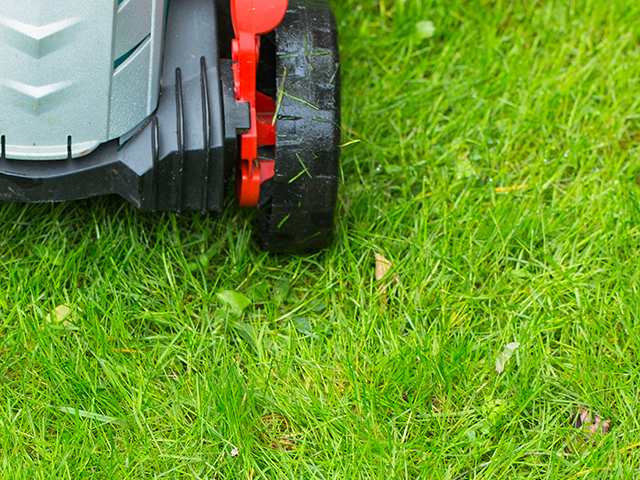Tips for mowing wet lawns

They say mowing grass when wet is a bad idea. The clippings will clump up, wet grass sticks to the underside of your mower sometimes clogging it, you won’t get the best cut so it looks a bit rough, the chlorophyll in the grass is far more likely to stain when wet, and there are potential safety/slipping issues. Yes, it’s better to wait until the grass is dry but often times it’s unavoidable – after all, we live on islands scattered in the middle of the South Pacific where regular rain is a fact of life! Mowing wet grass may not be the easiest or give you the perfect result, but here are some tips to help when you have to.
If you’re enjoying the benefits of rural or semi-rural living on a lifestyle block, download our free maintenance guide. It’s packed with useful information, tips and tricks to help you get the best out of your land, lawn and gardens.
Airflow is everything
Mowing is all about airflow – and believe it or not, it’s not uncommon to find aircraft engineers at the R&D centres of recognised mower manufacturers! The goal of any grass processing system is to create as much air as possible, to carry the grass with it. In New Zealand we tend to cut much lower than the rest of the world – meaning less air can get in underneath to help throw the grass. For this reason, make sure your mower has had a degree of New Zealand input or even adaption – as some don’t work that great. Most of the points below relate back to airflow, as this is a basic principle of mowing grass.
Take your time
Wet grass is going to take a lot more effort and airflow to be discharged or caught – so mow nice and slow and give the grass time to get where it needs to go.
Mow more often
Basic maths, the shorter the grass, the fewer clippings there will be to deal with. If you’re mowing every seven days, bring it down to five or less. Also, longer grass is more difficult to cut in general, especially when it’s wet.
Raise the mower deck a notch or two
You’ll still get the uniform look, but with a smaller amount of clippings. It’s also less damaging for the grass and you’ll keep it in better condition. And it reduces the load on your mower. When you raise the deck up, you’re allowing more air to be sucked in from the front and sides of the deck, improving the discharge performance. Some brands make this much easier thanks to New Zealand input into the deck design – Walker has unique air entry holes above the deck (the entire deck is unique to NZ and not sold in America!) and BOB-CAT Mowers all have an adjustable deck lip which allows much more air to get in when it’s needed most.
Side-discharge
If conditions are really bad, instead of bagging or mulching, set the mower to the highest setting, put the side discharge in place, and mow. You’ll be left with rows of clippings on the lawn but you can either cross-mow these in mulching or bagging mode, rake them up manually, or let them dry out for a few days then mow over them in mulching or bagging mode.
Sharpen the blades
For a good, clean, crisp cut you need sharp blades. This also keeps the grass healthier. When grass is wet the blades tend to shred rather than cut so ensuring the blades are in peak condition will give you a better result. You’ll definitely notice a difference trying to cut wet grass with blunt blades – so check these regularly!
Clean after you mow
Damp grass clippings cling to the underside of your mower. If left either they’ll go mouldy or harden and build up overtime, restricting your mower’s performance. Give the underside a good hose down, but also scrape it clean; a putty knife is a great tool for this. A wire brush is good for removing stubborn clippings from the wheels. A common question is ‘how do I get underneath?’ – some brands like Walker offer a tilt up deck which helps with this. But you can keep things simple with an endless chain/block and tackle hoist – this can be mounted onto beams/rafters in the garage or even a sturdy tree branch and allow you to quickly and cheaply access the underside of the deck.
Remove or allow excess water to go first
If there’s been a heavy dew, or it has just stopped raining – it’s best to wait another hour or two, the difference can be drastic. With a little sun or wind, the excess moisture will either evaporate or drain away. You could try dragging a hose across the grass to ‘squeegee’ off some of the moisture. Don’t mow if the ground itself is too soggy. If the ground sinks beneath your feet it is too wet to mow; you are likely to squash the grass and/or disturb the root system damaging the grass in a serious way. It will also leave ruts in the lawn where your lawnmower wheels have been.